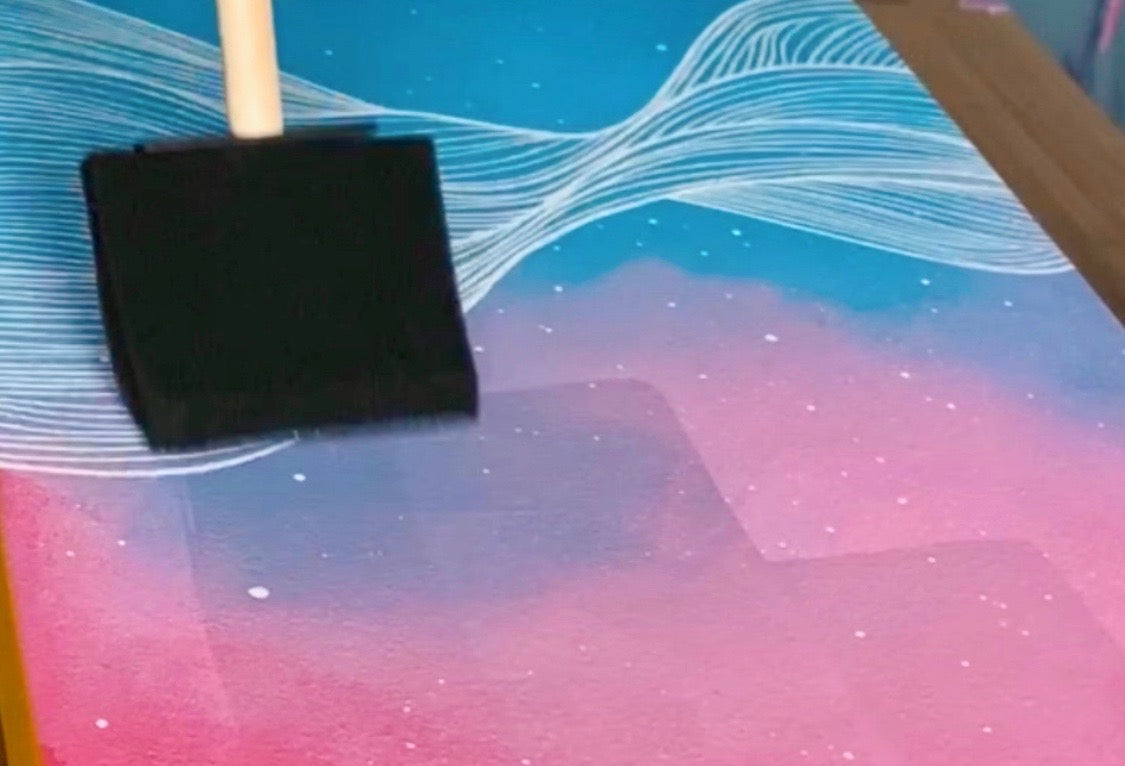
How I Varnish Acrylic Paintings
I don't believe all artworks need to be varnished, it really comes down to personal choice, however, in the painting process, I find varnishing one of the most relaxing things to do and a great way to think about your artwork as finished.
I started varnishing my artworks because I had a couple of little accidents (aka panic moments) while setting up stands for art shows, and kept doing it... just in case...
If you paint an artwork for your home and don't have any plan of moving it, then it's up to you if varnishing or not, if you move stuff around like I do, then better varnish your artworks and reduce to the minimum the panic moments :)
There are also some undeniable pros in varnishing your work, so... if you decide to varnish, here below you can find what I use in my studio.
But before we dive into that... the benefits of varnishing are:
1. Varnishing protects your work.
One or two coats of varnish will protect your paintings from sharp objects (as long as you don't stab the canvas... varnishes can't do that!), dust, dirty hands, moisture, and... drum-roll... UV light.
As I found out the hard way, varnishing does not protect your artwork from the drill... be careful :)
2. It makes colours more vibrant. Whether you use a matte or a gloss varnish, colours will be enhanced.
3. As varnish creates a consistent surface finish, especially if you've used different brands of colour where some paints are more matte/gloss than others.
Varnish will make everything more even.
4. Varnishing your artwork is like adding a period to a sentence. It's like saying "this composition is finished, I'm done with it".
The only negative aspect about varnishing is that the original colour can be altered, which is why I wasn't varnishing in the very beginning.
So if you are using very particular colours that might be damaged, altered or ruined, consider do a test on a small piece of paper to see if your colour + varnish are a good combination.
For example, I found out that gold spray paint and the 2 kinds of varnish I use (more below) don't sit well together and the gold paint gets all ruined.
But this only happens with spray paint, so if you are varnishing anything that isn't acrylic paint, I suggest you check compatibility before you ruin your precious artwork!
Liquitex High Gloss Varnish
This varnish is of a superior kind, trust me! It's not yellowing and archival, which is always a plus. And it makes your artwork shiny.
It also comes in a matte version if you aren't a fan of shiny stuff, Liquitex Matte Varnish.
What do you need to use this varnish?
You can use a clean, dry brush (don't invest in an expensive brush, get a cheap one as it will get ruined quickly!) but for optimal application you want to get a foam sponge.
This varnish begins to dry pretty quickly, so I only pass over an area a couple of times and move on. Don't overwork it or it can get foggy.
I usually apply a first coat horizontally on the canvas (remember to varnish the edges too!) and then, the following day, I apply a vertical coat.
If you see some tiny bubbles, you can blow on the artwork to make them pop, but they will mostly vanish by themselves.
Read the directions on this varnish, and keep the varnish pure, don't water it down.
Winsor & Newton Spray Gloss Varnish
I use this spray for artworks that have a bit more texture and where I know the Liquitex varnish will get overworked.
Liquitex is far superior in terms of quality, but this spray varnish is pretty good, and a valid alternative.
How to use it?
1. Shake the container vigorously before use and if you can wear a mask or be in the open.
2. Always spray with the can almost vertical and allow the contents to “cascade” on to the work.
3. When spraying, the can should be held at least 25-30cm (10-12 inches) away from the work.
4. Mount the work on a support that you don’t mind spoiling and spray side to side beyond the extremities of the work to ensure full coverage.
Hope you found this content helpful. And if you have any questions, don't be afraid to reach out!











